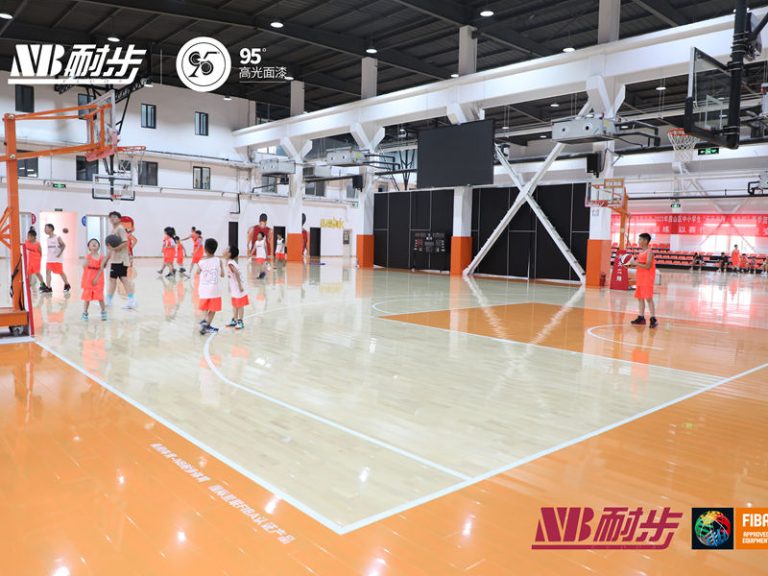When designing or upgrading a basketball gym, one of the most critical components is the flooring. The right surface plays a crucial role in ensuring athlete performance, reducing injury risks, and maintaining the court’s durability over time. Whether you’re outfitting a professional gym or a school facility, choosing the right basketball gym flooring is essential for both safety and playability.
Why Basketball Gym Flooring Matters
Basketball is an intense, high-impact sport that involves running, jumping, and sudden direction changes. The floor must provide:
Consistent ball bounce: Essential for controlled play
Shock absorption: Protects joints and minimizes the risk of injuries
Traction: Prevents slipping while allowing quick movements
Durability: Can withstand heavy foot traffic, repetitive use, and constant impact
Best Flooring Materials for Basketball Gyms
1. Hardwood Flooring (Maple)
Best for: Professional arenas, school gymnasiums, training centers
Material: Maple is the preferred wood for basketball courts due to its density and smooth surface.
Advantages:
Offers excellent ball bounce and responsiveness
Classic look and feel of professional courts (NBA, NCAA, FIBA)
Durable and long-lasting if maintained properly
Maintenance: Requires periodic refinishing and regular cleaning.
2. Polyurethane (PU) Flooring
Best for: Multi-purpose gyms, recreation centers
Advantages:
Seamless installation for an even, smooth surface
Provides excellent shock absorption for players
Customizable slip resistance levels
Low maintenance compared to wood
Maintenance: Easy to clean with just occasional mopping and surface inspections.
3. Vinyl Flooring
Best for: School gyms, community centers
Advantages:
Affordable and versatile
Durable and water-resistant
Good for multi-sport use and moderate traffic
Maintenance: Requires minimal upkeep and simple cleaning.
4. Modular Flooring Tiles
Best for: Temporary or hybrid courts
Advantages:
Quick to install and remove
Lightweight and portable
Customizable design options for different court sizes
Maintenance: Easy to replace individual tiles if damaged.
Factors to Consider When Choosing Basketball Gym Flooring
Usage Frequency: High-traffic courts need more durable options like hardwood or PU flooring.
Budget: Hardwood provides top-tier performance but is more expensive, while vinyl or modular tiles can offer budget-friendly solutions.
Indoor vs. Outdoor Use: For outdoor courts or gyms with fluctuating conditions, synthetic floors like vinyl are ideal.
Maintenance Commitment: Wood floors require more upkeep, while synthetic options are easier to maintain.
Performance Needs: Professional leagues demand hardwood or premium PU systems, while recreational courts can use more affordable alternatives.
Installation Tips for Basketball Gym Flooring
Subfloor Preparation: Ensure that the base is flat, level, and moisture-free.
Shock Pads: For extra cushioning and player comfort, add a shock-absorbing layer beneath the flooring system.
Accurate Court Markings: Professional markings and logos not only improve the appearance but also help players by keeping the court regulated and organized.
Climate Control: Hardwood floors should be installed in controlled environments to avoid warping and expansion due to humidity.
Maintenance for Basketball Gym Floors
Regardless of the flooring material, regular care is vital to preserving the floor’s performance and aesthetics.
Daily: Sweep or vacuum the court to remove dust and debris.
Weekly: Mop the surface using a gentle cleaner that’s appropriate for the material.
Annually: Refinish or reseal wood floors to maintain their integrity. Synthetic surfaces may require periodic resurfacing.
Inspections: Check for any loose seams, cracks, or wear, particularly around high-traffic areas.
Final Thoughts
Choosing the right basketball gym flooring is a long-term investment in both your athletes’ safety and the court’s performance. Whether you opt for hardwood, synthetic surfaces, or modular systems, make sure to select a solution that matches your facility’s needs, usage frequency, and budget.
With the right flooring in place, every dribble, jump, and slam dunk will be on a surface built to last—helping players perform at their best while maintaining safety and comfort.


